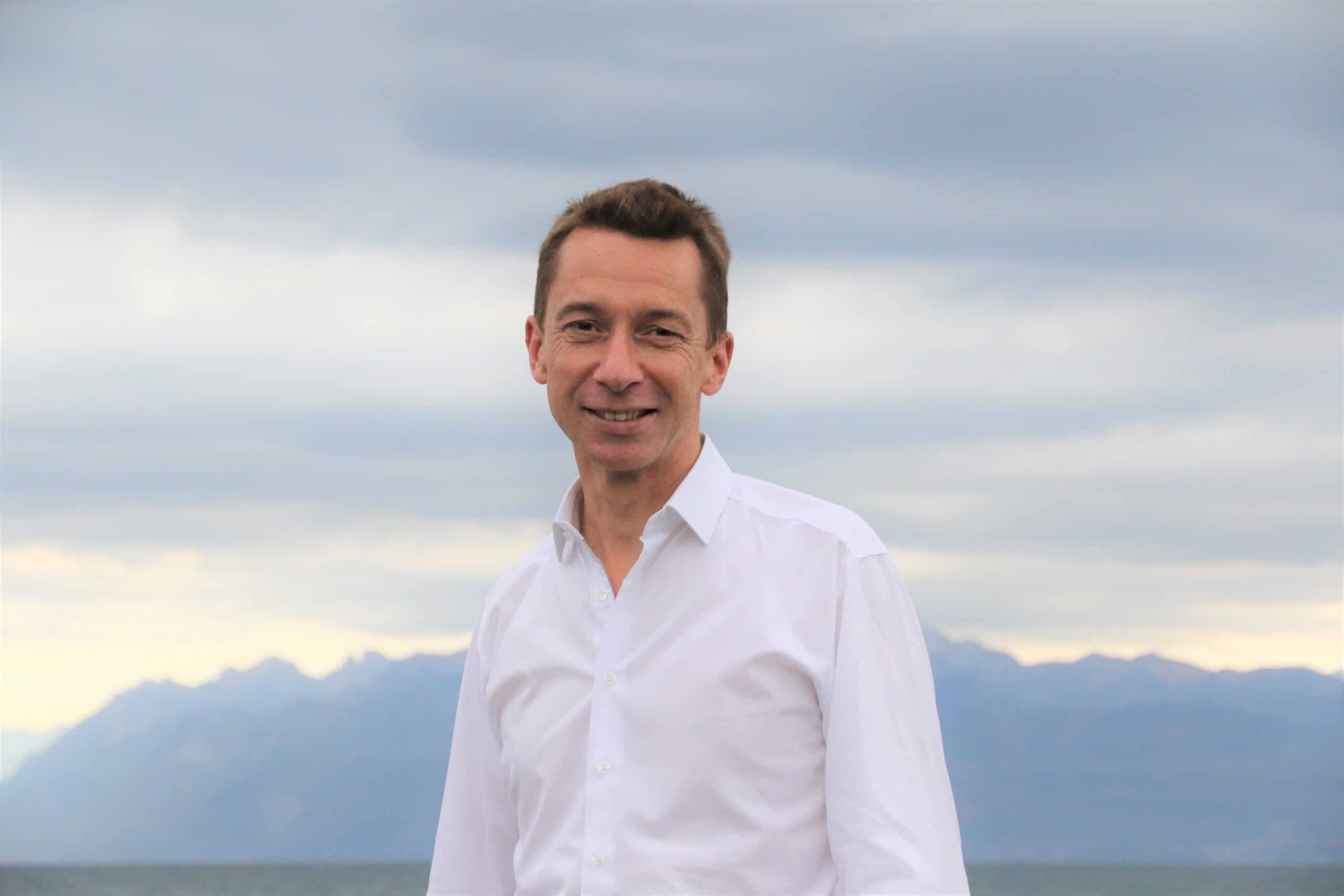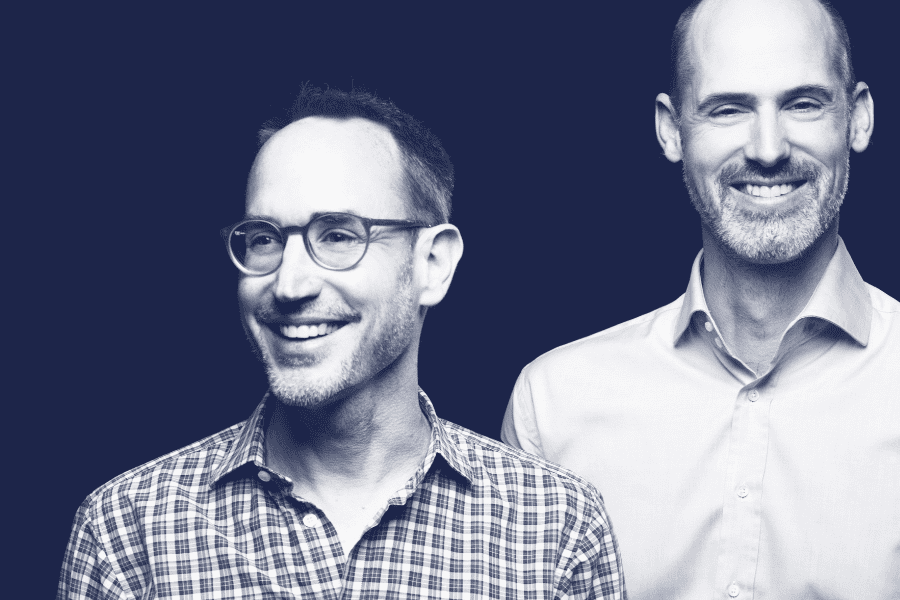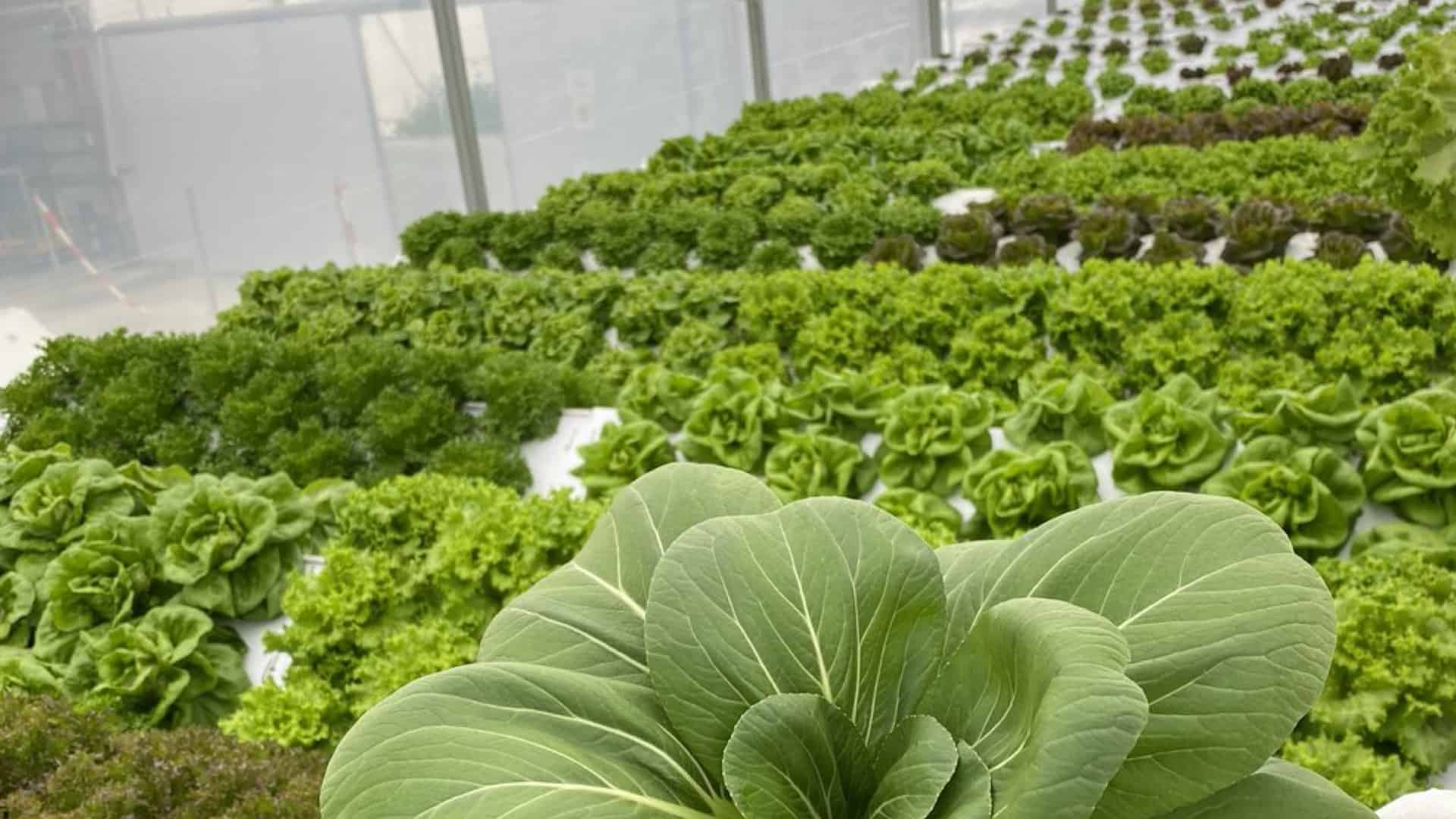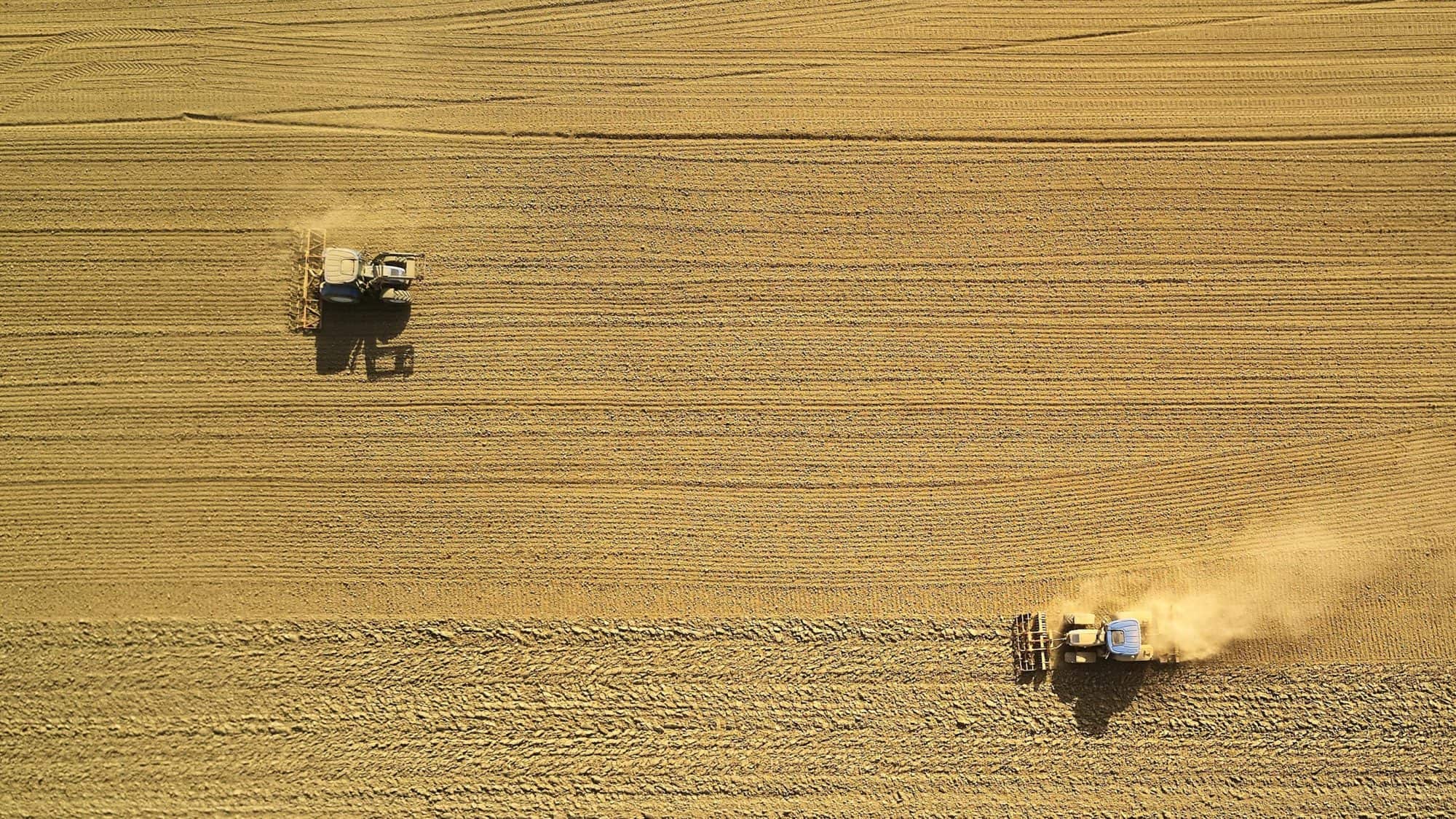CleanGreens has mastered an as-of-yet little used technology in agriculture, aeroponics, which dispenses with soil and grows plants suspended in the air. But how can plants not only grow but thrive in such an environment? And, more importantly, how do they taste? CEO Bruno Cheval walks us through the basics of aeroponics, its advantages and CleanGreens’ plan of making it the go-to technology for growing leafy greens and aromatic herbs around the world.

CEO, CleanGreens
Bruno Cheval became CEO of CleanGreens in January 2022, but he is not new to the company. He was previously CleanGreens’ Director of Finance for nearly two years. He has more than 25 years of experience in financial markets and corporate finance, developing economic models and valuations to assist business leaders in the funding and growth of their companies.
Founded in 2013, CleanGreens Solutions, previously known as CombaGroup SA, is an award-winning Swiss agtech startup that provides innovative farming solutions in mobile aeroponics. The company’s mission is to transform the culture of leafy greens and aromatic plants by providing growers, processors and distributors with a technology that greatly reduces water consumption and contamination risks while offering maximum productivity per square meter. Due to its commitment to sustainability and social impact, CleanGreens became a Certified B Corporation and was one of the first solutions to receive a Solar Impulse Foundation label. It has been a Verve Ventures portfolio company since its Seed round.
CleanGreens spent its first 6 years designing, developing and polishing its first growing system at their headquarters in Molondin, Switzerland. Their first commercial system was installed in France in 2019. Its success quickly led to additional systems being installed in the country and a partnership with one of France’s leading bagged salad producers, Les Crudettes. CleanGreens systems followed in Switzerland and are now being installed in Kuwait.
Let’s start at the beginning. What exactly is aeroponics?
Besides conventional farming in soil, there are two types of technologies you can use to grow plants in greenhouses. One is hydroponics, where the roots are in water or nutritive solution and the second is aeroponics where the roots are hanging in the air. And actually – and this is something I discovered when I joined the company – the best environment for the roots is when they are in the air because they get more oxygen than when they are in soil or water that way.
With aeroponics, the upper part of the plant, the leaves, gets a lot of CO2, sunlight and under control humidity while the bottom part of the plant, the roots, gets darkness, oxygen and saturated humidity. By creating this kind of perfect separation between the two environments, you create the best conditions for the plant to grow.
When most people think of plants growing, they consider soil as something indispensable for the healthy development of plants. Aeroponics eliminates its use altogether. How do the plants survive without it?
We use a patented technology of mobile irrigation. Our irrigation robot goes back and forth below the cultivation modules, spraying a nutritive solution directly to the plants’ roots. In this way, you can really control the quantity and frequency of the nutritive solution that you give to the plants. Any droplets that are not absorbed by the roots fall to the bottom of the system. They are collected and go back into the tank, where they’re filtered, regenerated in nutrient solution and then sprayed back. In this way, we save a lot of water. Compared to conventional agriculture which uses 200-250 liters of water for one kilogram of lettuce and hydroponics that uses 20-25 liters/kilogram, we’ve managed to reduce it to 10 liters/kilogram.
We managed to have 13 cycles a year for lettuce without compromising on the quality.
Plant yields are much higher for aeroponics compared to both hydroponics and conventional agriculture. I also saw pictures of the aeroponics-grown plants and they’re huge compared to those grown using hydroponics. Why is that?
It comes down to providing the best conditions for the plant. If you look at the roots of a hydroponics’ plant, it’s like when you spend more than an hour in your bath, your skin becomes wrinkled, the roots of hydroponics-grown plants are the same. The nutrient intake is not maximized so it doesn’t provide enough nutrients to the plant. This leads to both a lower yield and a less developed plant. Aeroponics maximizes the conditions that are provided to the plant and that results in a very high yield.
To give you an idea, if you grow lettuce through conventional farming, you get 3 kilograms/square meter. Hydroponics is around 45-50 kilograms/square meter. With aeroponics, we got 95 kilograms/square meter and this is a number validated with our industrial partner in France, Les Crudettes. One of the reasons why we can reach such a high yield is because we managed to accelerate the cycle of production without any impact on the quality of the plant. Typically, in conventional farming, you will have two, maybe three cycles a year. We managed to have 13 cycles a year for lettuce without compromising on the quality. We did some blind tests and if you compare our product with a typical salad you can get from supermarkets in Switzerland, our product was rated higher in terms of quality.
What can be grown with aeroponics?
Virtually any plant can grow with aeroponics. For the moment, at CleanGreens, we’re focusing on leafy greens, namely lettuce, aromatic herbs and medicinal plants, because these are the easiest to grow using aeroponics and that’s where the system also brings a lot of value because we make the cycle much faster. However, we are looking at wider applications in the future.
Another very interesting thing I saw on your website is that you don’t use pesticides at all. Is it not necessary?
That’s true, we don’t use any pesticides or herbicides because the plants are in a controlled environment and by spraying the nutritive solution directly on the roots, no water reaches the leaves. In this way, they stay completely dry, and no fungus or bacteria develops. The greenhouse provides protection to the crop and there is also no contamination between plants because they are perfectly separated from one another.
This also makes it possible for us to reduce waste from the plant itself. With conventional farming and hydroponics, the leaves that are touching the soil or water are not very healthy, they can rot, so they are thrown away. With aeroponics, the salad is put on aluminum plates. They are not damaged by contact with soil or humidity so even the big leaves at the bottom of the plant can be used for consumption.
Now, one final question about the system. What about the taste? I think this is always the main concern of people buying plants grown in greenhouses.
The best thing I can say is come over and taste it yourself! (laughs) We did the blind tests of the different types of salads and aromatic herbs with the Ecole Professionnelle de Montreux (EPM) in Switzerland which trains chefs. The idea was to give the products to experienced chefs and have them compare our products both raw and cooked to those typically found in shops. They ranked our products the same or higher than those regularly found on supermarket shelves. Due to its high nutrient intake, aeroponic-grown salad is also crunchier and better looking than a lot of other salads on the market.

Invest in Startups
As one of Europe’s most active venture capital investors, we grant qualified private investors access to top-tier European startups. With investments starting at EUR/CHF 10’000, you can build your own tailored portfolio over time and diversify across stages and sectors.
Europe experienced some severe droughts this summer. Does that make your technology more appealing to growers?
Definitely, I think one of the biggest advantages of our technology is that being in a controlled environment you remove most of the uncertainty that is linked to conventional farming. We can produce 365 days a year, very consistently, the same type of product and very close to the consumption center. Any impact on agriculture due to climate change, health emergencies such as the COVID-19 pandemic or the war in Ukraine, makes our product more appealing because the client can guarantee the delivery of the same type of product all year round regardless of unexpected situations, reducing the stress on their supply chain.
Does the fact that aeroponics requires less water make it an attractive technology to countries where the water supply is scarce?
We are currently in the middle of launching our first project in Kuwait with our partner there, GreenLife. I went there two months ago, and water really is as precious to them as oil is to Europeans. The main driver for them is food independence and reaching it while minimizing the impact on natural resources. Clearly our technology reduces water use greatly and that was the main driver for their decision to go forward with the project. Soon they will be able to grow their first Kuwaiti salad and aromatic herbs 365 days a year.
This is your first project in the Middle East. Do you think that if it will be successful, it might also attract other clients in that area?
Delivering this project is a critical moment for CleanGreens. It’s the first time we’re installing a system outside of Europe and it comes with its own challenges. For example, it’s about 50 degrees Celsius now in Kuwait and we’re installing high precision technology. In a way, it’s the exact opposite problem of Europe where greenhouses need to be heated. In Kuwait, we need to make sure they’re cooled to a constant 25 degrees Celsius so the aeroponics system can work efficiently. That being said, it’s a very promising project that is sure to open doors.
Are there any other countries you’re looking to expand into?
There are three geographical zones we are looking at. Europe and in particular the more Northern countries that would benefit from our technology. The Gulf Cooperation Council (GCC) area is the second as we definitely feel like there’s a big advantage in operating our system there. And the third one is North America, more specifically Canada and the US. There is a huge potential there because they know a lot about hydroponics and vertical farming, but there are very few companies doing aeroponics in greenhouses and this is where we differentiate ourselves. We can create value for our clients because we have mastered a technology that is complicated to learn. And there are very few people who can do it. That’s why we want to go to the US, to bring our technology to the market and show them that it’s better than what they’ve been using so far.
CleanGreens has a small team of 20 people. How do they manage to get all this done?
Our team is very dedicated and talented, they put in long hours and some of them have been with the company for a long time now. One of the main goals of our company is to transform agriculture and reduce its impact on the environment. And this is a strong motivator for our team, they know they are doing good for the environment and the future of the planet. Our tagline is ‘grow unique’ and that’s basically it. Solving the issues facing agriculture today while growing unique fresh products, that’s what we are aiming for and what we work for every day.
Written by
WITH US, YOU CANCO-INVEST IN DEEP TECH STARTUPS

Verve's investor network
With annual investments of EUR 60-70 mio, we belong to the top 10% most active startup investors in Europe. We therefore get you into competitive financing rounds alongside other world-class venture capital funds.
We empower you to build your individual portfolio.
More News
06.10.2021
How our startups contribute to the UN Sustainable Development Goals
Bertrand Piccard thinks that investors should see ecology through the lens of economic profitability. This article explains why his Solar Impulse Foundation awarded the “Efficient Solution Label” to our portfolio companies CleanGreens, Insolight, and 9T Labs, and how they contribute to sustainable development.
23.04.2019
“Agriculture needs to catch up“
Agriculture is entering the digital age, and venture capital is pushing this transformation. AgriTech is no longer a niche, and a few VC funds are specialized on this topic. Julie and Tom from Paris-based Capagro told us why they invest in this space.
Startups,Innovation andVenture Capital
Sign up to receive our weekly newsletter and learn about investing in technologies that are changing the world.



